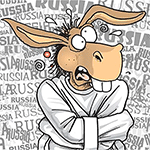Teen's Death Raises Painful, Pressing Questions
They do not see you. For every African American, it comes as surely as hard times, setback and tears, that moment when you realize somebody is looking right at you and yet, not seeing you -- as if you had become cellophane, as if you had become air, as if somehow, some way, you were right there and yet at the same time, not.
Ralph Ellison described that phenomenon in a milestone novel that begins as follows: "I am an invisible man. No, I am not a spook like those who haunted Edgar Allan Poe. Nor am I one of your Hollywood-movie ectoplasms. I am a man of substance, of flesh and bone, fiber and liquids -- and I might even be said to possess a mind. I am invisible, understand, simply because people refuse to see me."
Trayvon Martin was killed on Feb. 26 in Sanford, Fla., fully 60 years after Ellison published "Invisible Man." The circumstances of the unarmed 17-year-old's death suggest that even six decades later, invisibility plagues black folks, still.
It happened like this. He was visiting his father, watching hoops on television. At halftime, he left his dad's townhouse in a gated community and walked to a 7-Eleven for snacks. There was a light drizzle and he was wearing a hooded sweatshirt and jeans. On the way back, he drew the attention of George Zimmerman, captain of the Neighborhood Watch. Zimmerman, who is white, called police from his SUV and told them he was following a "suspicious" character. The dispatcher promised to send a prowl car and told Zimmerman to stay in his vehicle.
He didn't. When police arrived, they found him with a bloody nose and Martin face down on the grass not far from his father's door, a gunshot wound in his chest. Zimmerman said he shot the boy in self-defense. Police did not arrest him. At this writing, nearly three weeks later, they still have not, citing insufficient evidence. The case has been referred to the state's attorney and the NAACP has asked the Justice Department to intervene.
All of which raises a number of pressing questions:
How can you get out of your truck against police advice, instigate a fight, get your nose bloodied in said fight, shoot the person you were fighting with, and claim self-defense? If anyone was defending themselves, wasn't it Trayvon Martin?
Would police have been so forbearing had Martin confronted and killed an unarmed George Zimmerman?
Of course, the most pressing question is this: What exactly was it that made this boy seem "suspicious"? The available evidence suggests a sad and simple answer: He existed while black.
The manner of said existence doesn't matter. It is the existing itself that is problematic. Again: Sometimes, they do not see you.
...continued
(c) 2012 CLARENCE PAGE DISTRIBUTED BY TRIBUNE MEDIA SERVICES, INC.






